Taiwan's air defense system: anti-aircraft machine guns and artillery installations
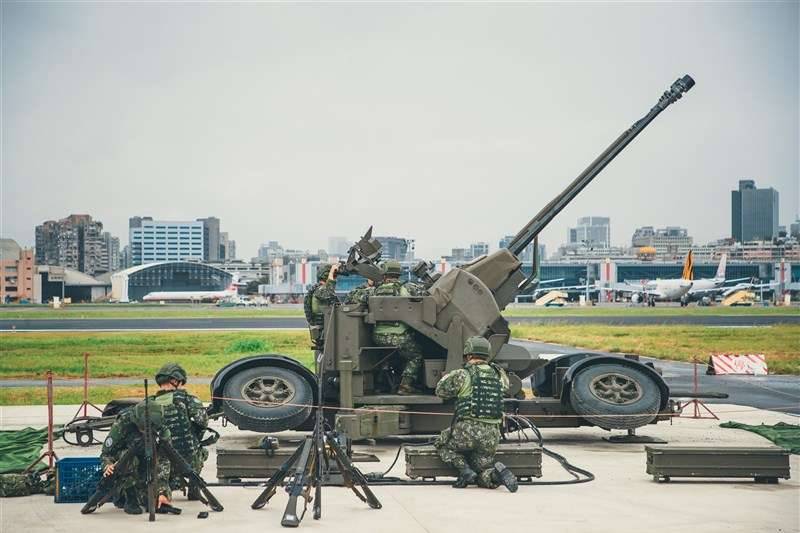
During the Cold War, the air defense system of the Republic of China was based on American-made equipment and weapons. On the distant approaches, the means of air attack of the enemy were to meet jet fighter-interceptors, and the objective air defense at over-the-horizon ranges was provided by the Nike-Hercules and Hawk air defense systems.
Taiwan Air Force, represented by a fighter aviation and anti-aircraft missile troops, qualitatively and quantitatively fully corresponded to the tasks assigned to them. But with military air defense and protection against low-altitude bombing and assault attacks by enemy aircraft on large military bases, airfields, transport hubs and administrative and industrial centers, things were not so good.
Until the mid-1970s, the air defense units of the Taiwanese ground forces were armed mainly with machine guns and artillery anti-aircraft installations of the Second World War era. After diplomatic relations were established between the US and China, Washington, in order not to irritate Beijing once again, began to more carefully carry out military-technical cooperation with Taipei. So, for a long period of time, Taiwan, despite repeated requests, could not receive MANPADS, and short-range anti-aircraft missile systems were supplied in relatively small volumes and not the most modern.
In the current situation, the military air defense of the Taiwanese army for a long time was forced to rely on large-caliber anti-aircraft machine guns and rapid-fire anti-aircraft guns. Moreover, the armed forces of the rebellious island Republic of China still have a very significant number of rare anti-aircraft guns.
At the same time, taking into account the significant role played by machine guns and artillery mounts in providing air defense for individual units and antiamphibious fortifications, Taiwan continues to improve existing and create new types of anti-aircraft artillery weapons.
12,7 mm anti-aircraft machine gun mounts
According to reference data, the United States has donated more than 11 12,7mm machine guns to Taiwan. These were mainly Browning M2NV machine guns, as well as several hundred quad anti-aircraft guns.
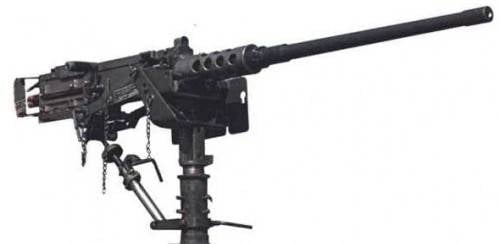
Large-caliber "Brownings" were actively used and are used in the infantry. For firing at air targets, single and twin machine guns are mounted on telescopic racks and special turrets placed on various vehicles and armored vehicles.
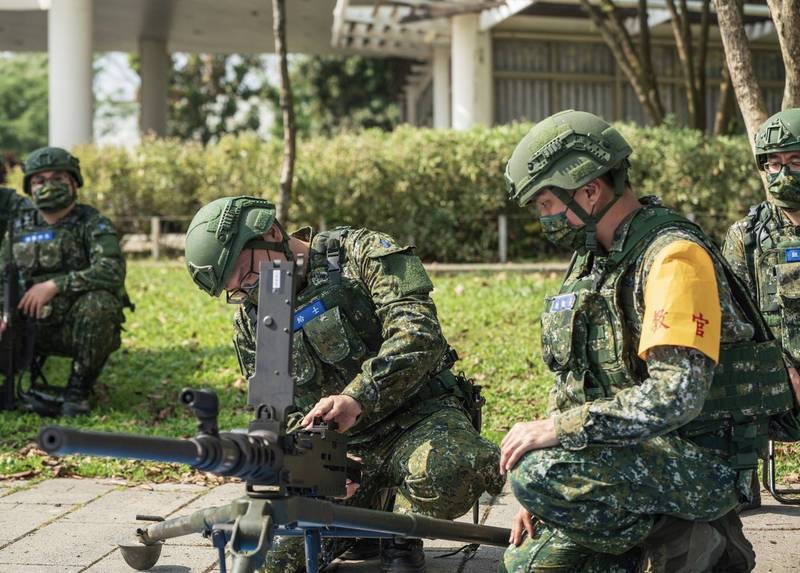
In 2001, the Type 90 machine gun, designed by the 205th Arsenal of the Ministry of Defense of the Republic of China, entered service. This weapon chambered for 12,7 × 99 mm was created on the basis of the Browning M2HB and has similar characteristics. Without a machine gun, the body of a machine gun weighs 38 kg. Machine gun length - 1 746 mm. Barrel length - 1 mm.
The rate of fire, depending on the ammunition used, is 450-630 rds / min. Initial speed - up to 928 m / s. The effective range for air targets, according to the manufacturer, is up to 1 m. An armor-piercing incendiary bullet at a distance of 400 m is capable of penetrating 500 mm steel armor of medium hardness.
The Taiwanese armed forces still operate a significant number of quad 12,7-mm M45 Quadmoun anti-aircraft guns on a unified M20 trailer. The M45 installation appeared in 1943 and was in service in the United States until the mid-1970s.
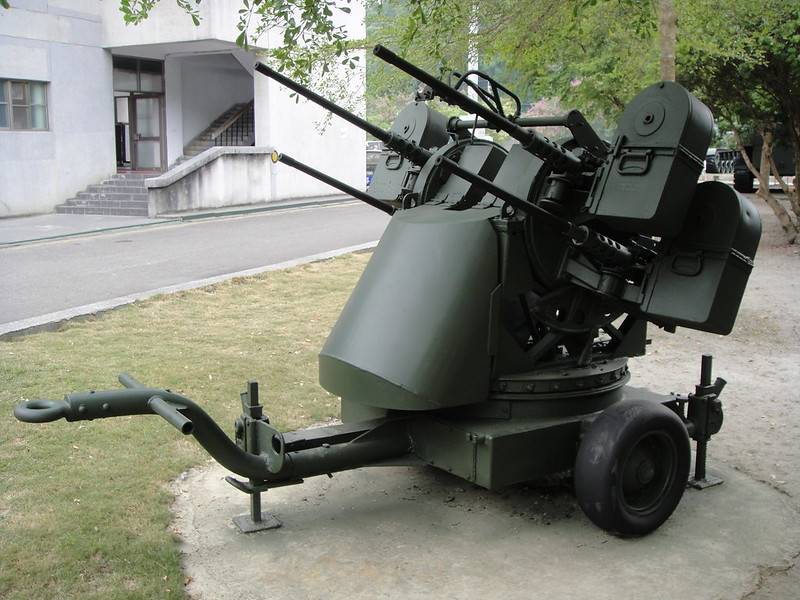
For the period of the Second World War, it was a very advanced air defense weapon with high combat effectiveness, with a rate of fire of about 2 rounds per minute. The capacity of cartridge boxes at the installation is 300 rounds. Guidance installation on the target is carried out by electric drives powered by a gasoline generator. The backup power source is lead-acid batteries.
The electric motors of the guidance drives are made powerful, capable of withstanding the heaviest loads. Thanks to electric drives, the installation has a pointing speed of up to 60 ° / sec. Installation weight in combat position - 1 kg. When transferred to a combat position, the wheel travel is separated, and the installation is hung out on jacks.
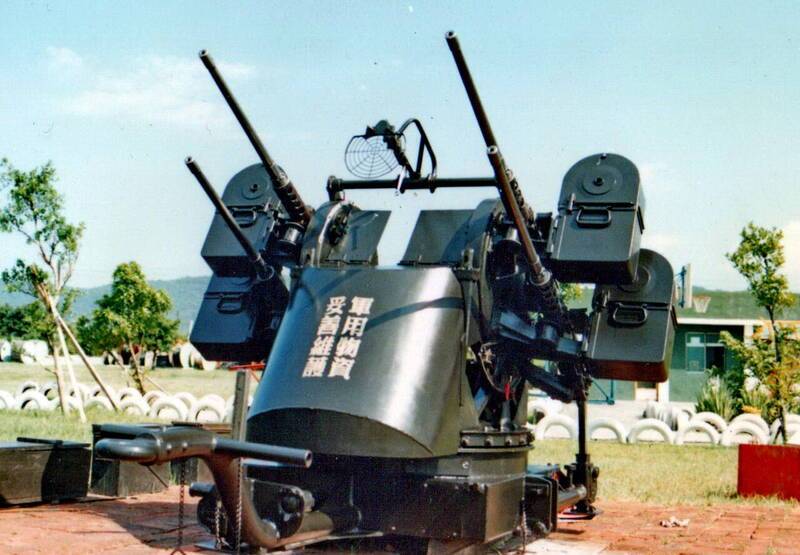
The production of the ZPU M45 Quadmoun ended in the early 1950s, but, despite its decent age, these installations are still in the army. In the past, quad 12,7-mm ZPUs were placed on the chassis of army trucks and half-tracked armored personnel carriers, and such anti-aircraft self-propelled guns were used to escort transport convoys and cover troops in the front line.
Currently, the M45 installations are mainly preserved in anti-amphibious fortifications on the coast of Taiwan and the islands controlled by Taipei, which is partly due to their high effectiveness in terms of manpower and the ability to hit lightly armored amphibious assault transporters and small watercraft.
20 mm anti-aircraft gun mounts
In the late 1970s, to replace the ZPU M45 Quadmoun, the designers of the 205th Arsenal of the Ministry of Defense of the Republic of China created a twin 20-mm T82 anti-aircraft gun. Conceptually, the 20mm mount is similar to the 12,7mm quad M45, it is also electrically aimed at the target by the shooter.
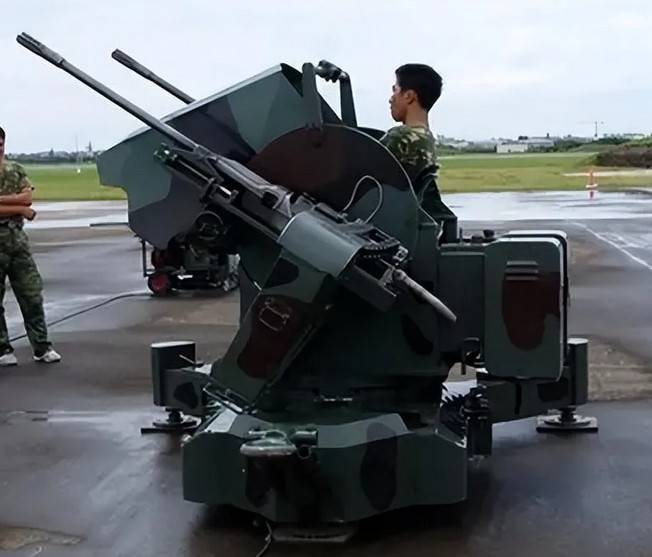
The universal 20-mm gun T75 was designed on the basis of the American M-39A3 gas-operated aircraft gun, which was part of the armament of the F-86 and F-5 fighters. The T75 cannon, just like its aviation relative, uses shots with electric primer ignition, which is done to increase the rate of fire. Depending on the type of target, the rate of fire can be adjusted from 200 to 1 rounds per minute. Accordingly, the total rate of fire from two barrels can reach 200 rds / min. Sighting range for air targets - up to 2 m.
The body weight of the gun is 85 kg. The mass of the installation, equipped with a folding wheel drive, in a combat position is 2 kg. Elevation angles: -400° to +15°. In the horizontal plane there is the possibility of circular fire. In the horizontal plane, the pointing speed reaches 85 ° / s, in the vertical - 120 ° / s. Ready-to-use ammunition - 60 shots. Installation modification T400F is designed to be placed in a stationary position, has no wheels and weighs 82 kg.
For firing at air, surface and ground targets, shots with armor-piercing tracer, fragmentation-incendiary, fragmentation-incendiary tracer and armor-piercing sub-caliber projectiles are used.
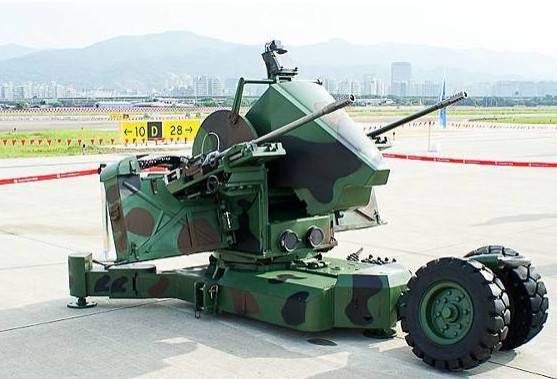
Early versions of the T82 had a simple collimator sight, the upgraded T82M installation is guided using a special helmet combined with a thermal imaging system, a laser rangefinder and a computerized ballistic computer. Also, a paired modernized T82M installation was used to create a ZSU based on a Humvee car.
35 mm anti-aircraft gun mounts
In the second half of the 1970s, on the basis of anti-Sovietism, a rapprochement between the United States and China began, which cooled relations with Taipei, and for some time the supply of American weapons to Taiwan ceased.
The leadership of the Republic of China, alarmed by this development, took steps to purchase air defense equipment from other suppliers, and in 1979 an agreement was concluded with the Swiss company Oerlikon to sell 35-mm twin anti-aircraft guns. Initially, it was supposed to buy anti-aircraft guns of the GDF-001 modification, but, apparently, Taiwan received GDF-1981 installations in 002 with an improved fire control system.
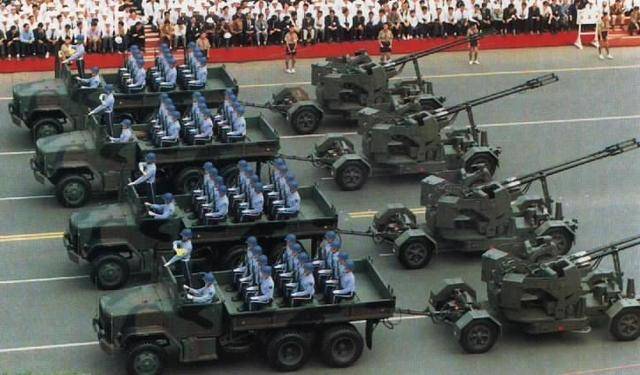
In total, 52 twin 35-mm anti-aircraft guns were delivered, which entered service with three anti-aircraft divisions.
The towed 35-mm Oerlikon GDF-002 anti-aircraft gun had a mass of 6 kg. Sighting range for air targets - up to 500 m, reach in height - up to 4 m. Rate of fire - 000 rds / min. The effective range for targets flying at speeds up to 3 m / s is 000 m. The capacity of the charging boxes is 1 shots. The fire is carried out by a 100-mm projectile weighing 400–2 g with an initial speed of 500–112 m/s.
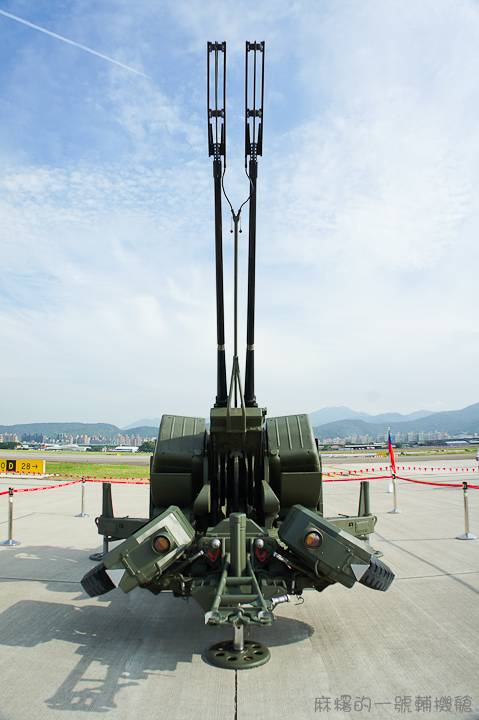
Each 35-mm twin anti-aircraft gun is connected by cable lines to the Skyguard FC radar. The anti-aircraft fire control station with a crew of two is located in a towed van, on the roof of which a rotating antenna of a pulsed Doppler radar, a radar range finder and a television camera are installed.
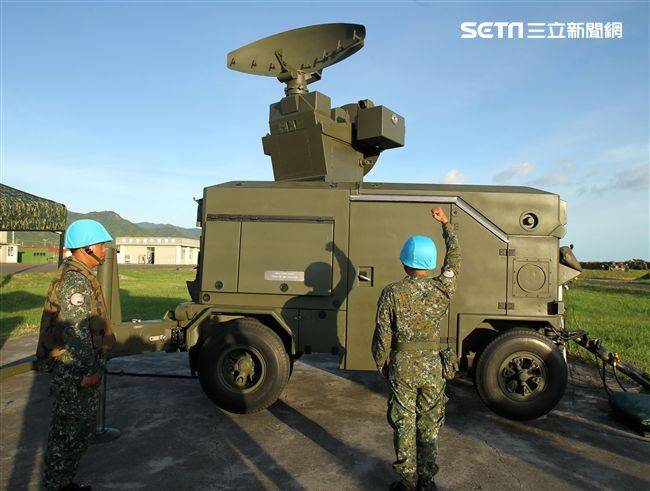
It is possible to automatically enter data into the sights of each anti-aircraft installation and automatically aim them at the target without the participation of the calculation. In addition to direct fire control of the anti-aircraft battery, an overview of the airspace at a distance of up to 40 km is provided at any time of the day.
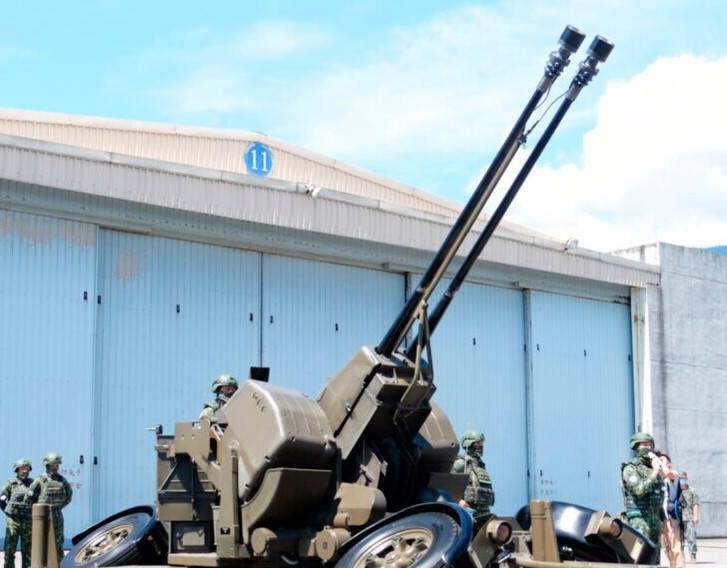
In the 35st century, Taiwan has upgraded its existing 006-mm anti-aircraft guns to the level of GDF-XNUMX. This modification is more in line with modern requirements. An autonomous optoelectronic sighting system with a laser rangefinder was introduced into the composition of the anti-aircraft battery;
The number of shots in the cartridge box has been increased to 280 units. The ammunition included shots equipped with projectiles with remote detonation, which significantly increases the likelihood of hitting an air target. For firing at armored vehicles, armor-piercing sub-caliber shells with armor penetration up to 80 mm at a distance of 300 m are intended.
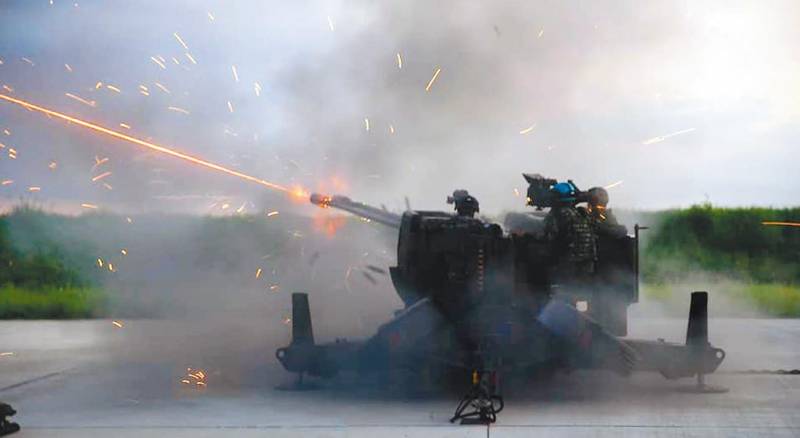
After modernization, the effectiveness of hitting air targets has increased significantly. During test firing conducted in 2012, it turned out that the number of shells needed to hit a typical target had decreased by about 30%. It is stated that an F-5 fighter flying at a speed of 1 km/h at an altitude of 100 m is destroyed with a 1% probability when flying through the affected area of an anti-aircraft battery of four installations.
40-mm anti-aircraft installations
For a long time, the most common anti-aircraft gun in Taiwan was the 40 mm M1 automatic cannon under the 40 × 311R unitary shot, which is the American version of the widespread Swedish Bofors L60 anti-aircraft gun.
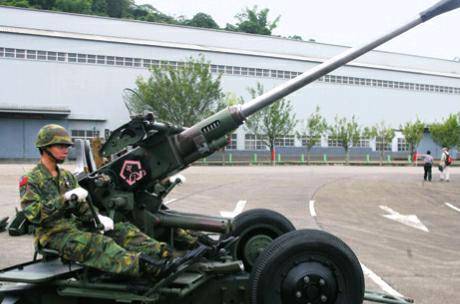
During the Second World War, the American company Chrysler produced about 60 000-mm anti-aircraft guns and more than 40 spare barrels for them. In the 120s and 000s, the United States transferred to Taiwan about 1950 1960mm assault rifles, a large number of spare barrels, parts, and ammunition.
Basically, these were guns on a modernized M2A1 carriage, which could be induced by electro-hydraulic drives according to data coming from PUAZO. An anti-aircraft sight was used as an understudy of POISOT, the data into which was driven in manually. Usually 40-mm machine guns were reduced to anti-aircraft batteries of 4-6 guns, controlled by POISOT. But if necessary, the calculation of each anti-aircraft installation can act individually.
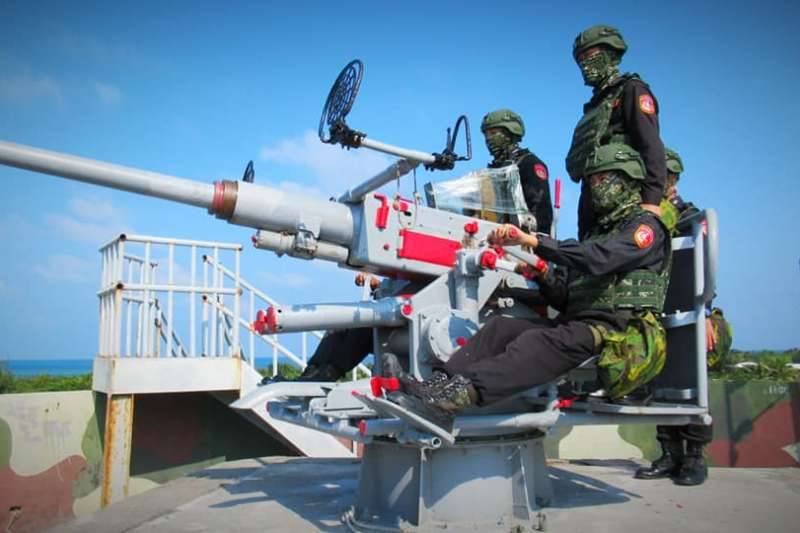
The 40-mm machine gun is mounted on a two-axle towed wagon, which, when transferred to a combat position, was hung on jacks. In case of urgent need, shooting can be carried out directly from the wheels, without additional procedures, but with less accuracy. The transition time from traveling to combat position: without POISOT - 2 minutes, with the deployment of POISO - 12 minutes.
The mass of the anti-aircraft gun in combat position is about 2 kg. Rate of fire: 500 to 120 rds/min. The rate of fire increased somewhat when the gun did not have high elevation angles. This was due to the fact that gravity accelerated the supply of ammunition. Combat rate of fire - 140-60 rds / min. Loading is carried out from a vertically inserted holder for 80 cartridges. Calculation - 4 people.
The main ammunition was a fragmentation-tracer 900 g projectile, equipped with 60 g of TNT, with a self-liquidating tracer. Initial speed - 850 m / s. Self-liquidating tracers gave a track lasting from 9 to 14 seconds. The length of the track, depending on the type of tracer: 3 or 200 m. The gun has a practical ceiling of about 5 m with a range of 000 m.
The effective range of firing at air targets does not exceed 4 m. The ammunition load also includes rounds with armor-piercing tracer rounds. Such a projectile weighing 500 g at a distance of 890 m is normally capable of penetrating 500 mm armor. The mass of a unitary shot with a fragmentation tracer grenade and an armor-piercing projectile is 50 kg. Ammunition for the American 2,12 mm M40 cannon is interchangeable with Bofors of this caliber produced in other countries.
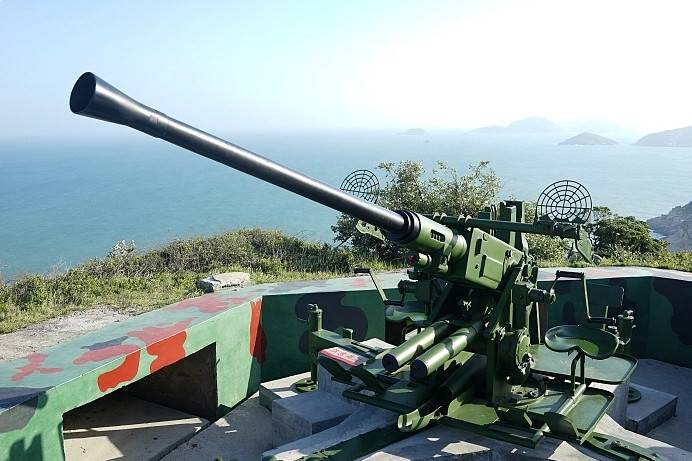
The towed 40mm M1 guns in Taiwan were decommissioned by 2015. However, a significant number of permanently installed 40-mm machine guns are available in coastal defense units. For these automatic guns, perhaps the main purpose is the destruction of landing craft, in the event of an attempt by the PLA to capture the islands.
Until 1968, the armed forces of Taiwan received several batches of 84 ZSU M42 Duster. This self-propelled unit, armed with two 40 mm automatic cannons mounted in an open top turret, was created on the basis of a light tank M41 in 1951. With a combat weight of 22,6 tons, the car could accelerate on the highway to 72 km / h. The forehead of the hull could confidently hold 14,5 mm armor-piercing bullets fired from a distance of 300 m.
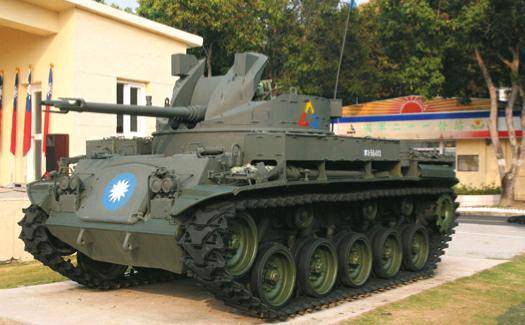
ZSU M42 Duster
The combat rate of fire when firing bursts reached 120 rounds per minute with a range of fire against air targets up to 5 m. Guidance is carried out using an electric drive, the turret is capable of rotating 000 ° at a speed of 360 ° per second, the vertical pointing angle of the gun is from -40 to +3° at 85° per second. The fire control system included a mirror sight and a calculating device, where data was entered manually. Ammunition was 25 shells. For self-defense, there was a 480 mm machine gun.
A significant drawback of the ZSU M42 was the lack of a radar sight and a centralized fire control system for an anti-aircraft battery. All this significantly reduced the effectiveness of anti-aircraft fire. But, despite this, the crews liked the cars due to their simplicity and unpretentiousness. Taking into account the experience of using anti-aircraft installations by the Americans in Vietnam, the command of the ground forces of the Republic of China considered anti-aircraft self-propelled guns as an effective means of destroying manpower and light armored vehicles, with armor protection and high firepower, it could be quickly transferred to the landing site of an enemy landing.
Given these considerations and due to the lack of mobile short-range air defense systems, 40-mm self-propelled units served for a very long time. The last ZSU M42 in Taiwan was withdrawn from the combat units in 1998, and for another 12 years they were in reserve.
In the 1980s, Taiwan acquired several dozen 40 mm Bofors L70 anti-aircraft guns. This anti-aircraft machine was created on the basis of the Bofors L60, and it uses the same automation scheme.
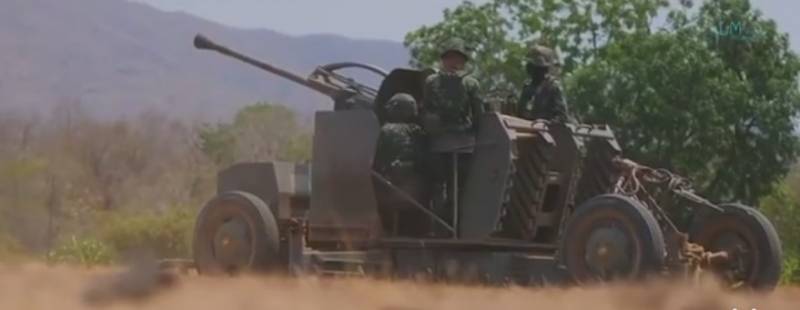
The main difference between the Bofors L70 is the use of a more powerful 40 × 364R ammunition with a projectile lightened up to 870 g, which made it possible to increase the muzzle velocity to 1 m/s and increase the effective firing range by about 030%.
In addition, the gun carriage, recoil devices and the power mechanism were reworked. Thanks to the introduction of electric drives, the pickup speed has increased significantly and it has become possible to unload calculations. Mechanical drives are used as backup. To ensure autonomous power supply - a gasoline generator.
Ready-to-use ammunition can reach 48 shots. At the same time, the weight of the artillery mount compared to the Bofors L60 increased by more than a ton. The latest modifications of this anti-aircraft gun had a rate of fire of up to 330 rds / min. To increase the efficiency of firing, projectiles with ready-made striking elements in the form of 600 tungsten balls and a proximity fuse were introduced into the ammunition load.
Taiwanese anti-aircraft gunners had the opportunity to compare the upgraded 35-mm anti-aircraft guns Oerlikon GDF-006 and 40-mm Bofors L70. In the course of real shooting at aerial targets, the Oerlikons gave about 30% more hits. At the same time, 40-mm projectiles had a high destructive effect, and one hit from the Bofors L70 in most cases was enough to shoot down any fighter-bomber.
It was a logical step to upgrade the 40-mm Bofors L70 guns in order to increase the probability of hitting a target and enable the all-day autonomous use of towed anti-aircraft guns.
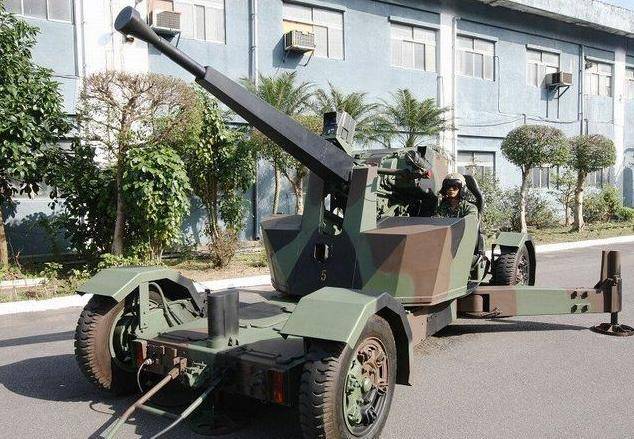
Modernized 40-mm anti-aircraft gun T92
In 2005, a radically upgraded 40-mm T92 anti-aircraft gun was demonstrated to the general public. This sample, created on the basis of the Bofors L70, is a joint development of the Singaporean company AOS and the 202nd Artillery Arsenal.
According to widespread promotional materials, the new 40-mm anti-aircraft gun weighs about 6 tons, and its effective range against air targets is 4 m. In addition to the standard ammunition for the Bofors L000, the T330 mount can fire programmable projectiles with detonation at a given point or projectiles equipped with a radar fuse that fires when flying close to the target. An increased probability of defeat is obtained thanks to ready-made lethal elements in the form of tungsten balls.
The installation is capable of rotating in any direction with a pointing speed in the horizontal plane up to 85 ° / sec. Elevation angles: from -4° to +80°, pointing speed in the vertical plane 45°/sec.
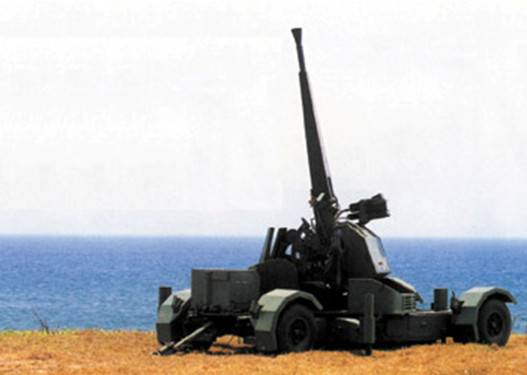
The barrel of the T92 anti-aircraft gun is equipped with a heat-insulating casing, which makes it possible to exclude the influence of external meteorological factors and improve firing accuracy. In this case, the barrel has forced cooling.
The gun is served by 5 people, but it is controlled by one gunner. To aim at the target, the shooter uses an optoelectronic system with a built-in thermal imager and a laser rangefinder. The detection range of OLS reaches 10 km. Own sights provide shelling of air targets flying at speeds up to 700 m/s. In case of failure of complex electronics, the installation is equipped with an optical sight.
It is possible to remotely control the T92 installation when the shooter is in a safe shelter. A battery of four guns is attached to a small-sized Tianbing search and sighting radar, with the help of which group guidance of 40-mm anti-aircraft guns is carried out.
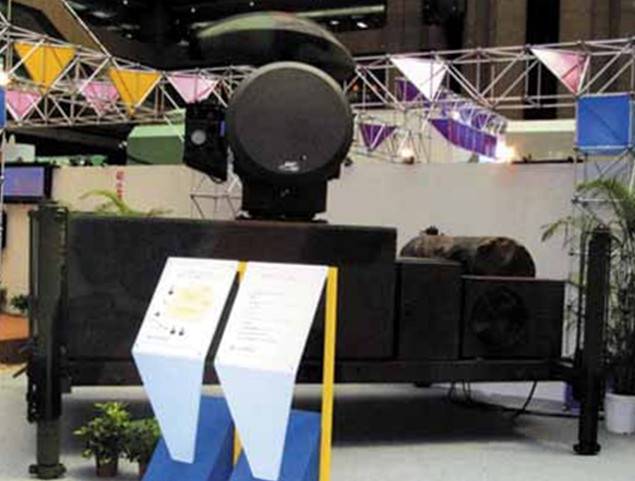
A radar station operating in the centimeter frequency range can detect and track a cruise missile at a distance of 20 km and simultaneously track 20 targets. The target can be fired upon 4,5 seconds after being detected.
The T92 anti-aircraft gun is towed by a 5-ton truck with a maximum speed of up to 60 km/h. Transfer from marching to combat position takes 5 minutes.
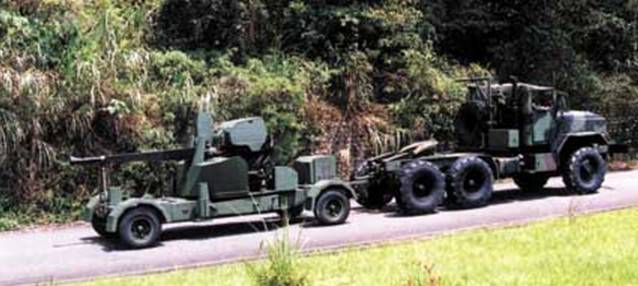
During tests, the 40-mm installation showed good results when firing at small speed boats. In the case of equipping firing positions on the coast, the battery of T92 guns is able to control the sea area at a distance of up to 8 km.
Продолжение следует ...
Information